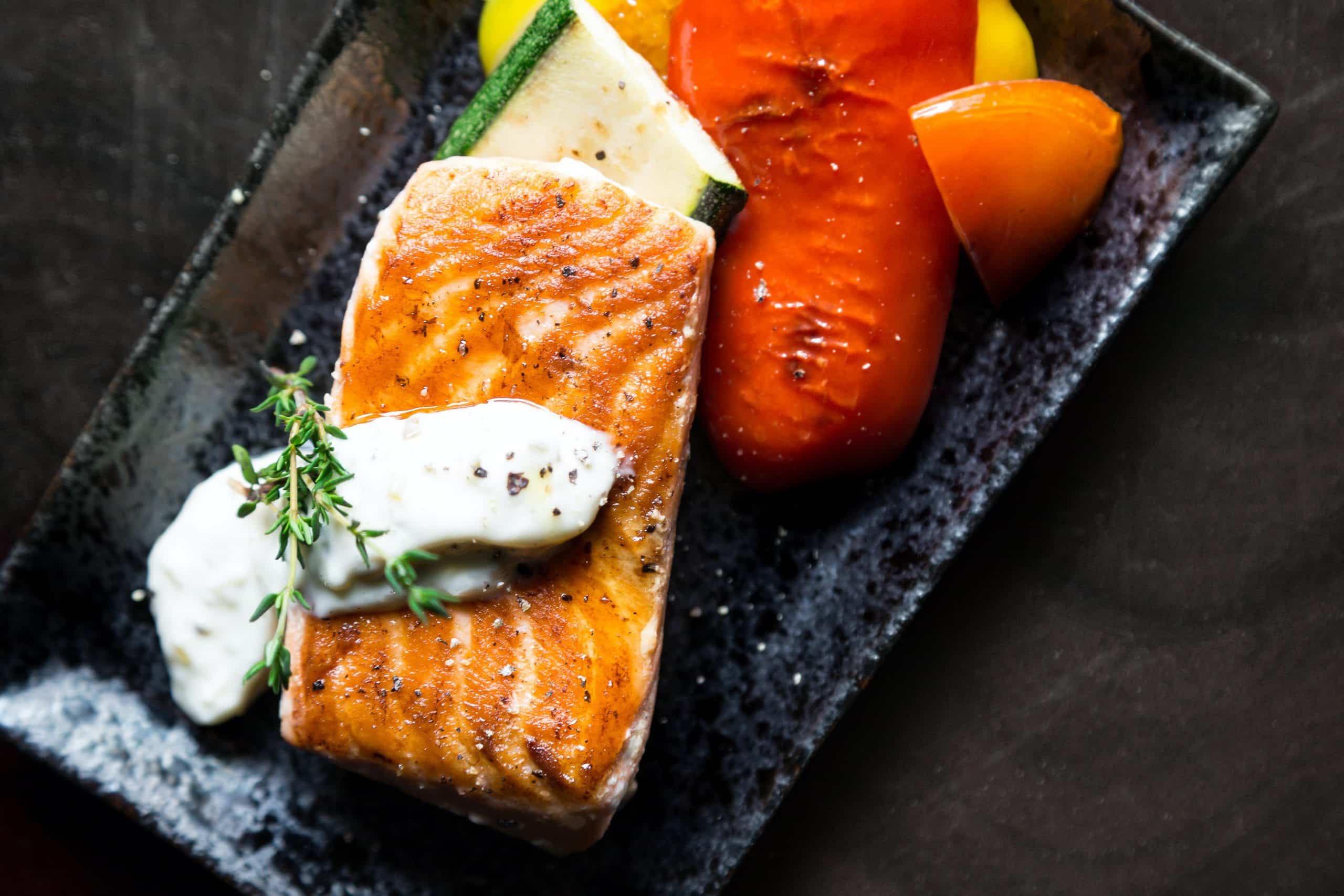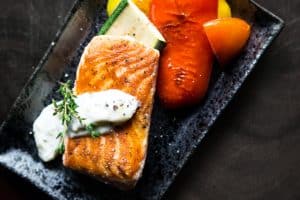
 If you’ve read much about eating healthy, you’ll probably notice that salmon is often recommended. There are good reasons that nutrition experts recommend salmon. Let’s start with it as a source of healthy Omega3 fatty acid. There’s a recommended ratio of omega6 fatty acid to omega3. The average American diet contains somewhere between a 10 parts Omega6 to 1 part Omega3 all the way to a fifty to one ratio. It should be closer to a four to one ratio and that’s where salmon can help. According to the Heart Association and Mayo Clinic, boosting your Omega3 is one of the best ways to improve your heart health. It protects blood vessels, lowers blood pressure, prevents clots and lowers triglycerides. Replacing meat with salmon can lower cholesterol levels.
If you’ve read much about eating healthy, you’ll probably notice that salmon is often recommended. There are good reasons that nutrition experts recommend salmon. Let’s start with it as a source of healthy Omega3 fatty acid. There’s a recommended ratio of omega6 fatty acid to omega3. The average American diet contains somewhere between a 10 parts Omega6 to 1 part Omega3 all the way to a fifty to one ratio. It should be closer to a four to one ratio and that’s where salmon can help. According to the Heart Association and Mayo Clinic, boosting your Omega3 is one of the best ways to improve your heart health. It protects blood vessels, lowers blood pressure, prevents clots and lowers triglycerides. Replacing meat with salmon can lower cholesterol levels.
You can boost your overall health by eating salmon a few times a week.
Salmon has a wealth of nutrients, besides the omega3 fatty acids. It’s loaded with iron, zinc, niacin, B12 and B6. It provides selenium that helps your thyroid in top working condition, while also aiding your immune system. Many of those nutrients in salmon are antioxidants, which means they protect the cells from damage. Cell damage can cause illness, aging and death. The body requires 55 micrograms of selenium each day and a 3-ounce serving of Coho salmon has 36, while pink salmon has 44. Wild salmon rather than farmed, offers the most.
There are several varieties of salmon, so the nutrients vary.
While all salmon is healthy for you, the amount of protein and nutrients vary by the type of salmon you have. Consider the amount of protein in each type of salmon. They’re all close, but Coho salmon offers more protein per 3-ounce serving than Atlantic salmon with Coho offering 23.3 grams and wild Atlantic salon providing 21.6. Potassium also varies, but in this case, Atlantic salmon wins with 534 milligrams compared to 387. Protein is a building block and potassium supports muscle function, which includes your heart, aids to digestion and strong bones.
Eat salmon for its astaxanthin.
What is astaxanthin? It’s an antioxidant that provides many health benefits. It also provides the pink color to salmon. Astaxanthin can aid in preventing oxidation of the bad cholesterol—LDL. It also increases the good HDL. Those two things alone can help reduce your risk for heart disease. If you want to look younger, there’s evidence that astaxanthin can help you do it. That’s because it helps prevent skin damage. One study observed a group of 44 skin damaged individuals and found that after being given a combination of 2 mg astaxanthin and 3 grams of collagen for 12 weeks, the skin elasticity and hydration improved significantly. Astaxanthin can also help the brain and nervous system.
- Eat salmon as a source of vitamin B. Just 3.5 ounces of wild salmon has 18% of vitamin B1, 29% B2, 50% niacin—B3, 19% pantothenic acid—B5, 47% B6, 7% folic acid—B9 and 51% B12.
- Consuming salmon a few times a week can help you lose weight. It can increase metabolic rate, help keep your appetite under control and boost that feeling of fullness. Best of all, studies show that when you lose weight, it is often belly fat.
- Inflammation may be the cause of many diseases, from cancer and heart disease to diabetes. Salmon is anti-inflammatory, meaning it reduces inflammatory markers and improve symptoms of inflammation.
- Increase salmon in your weekly diet and you can improve brain health, while also lowering signs of depression and anxiety. It also protects fetal brain health in pregnant women and age-related memory loss.
For more information, contact us today at Body Sculptors Personal Training
